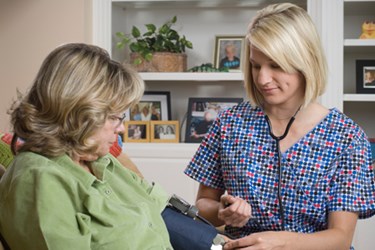Advancements In Home Care Technology Change Senior's Quality Of Life

By Adinah East, VP Quality Improvement, Caring People Inc.
When today’s seniors were teenagers, they couldn’t have imagined the types of advancements we’ve made in our technological pursuits. From our phones being used as computers to self-driving cars, we’ve come a long way since the days of listening to your favorite radio show as evening entertainment.
Home care has been shaped in many ways to include technology, and in 2017 seniors can experience a higher quality of life by implementing just a few small changes. While the foundation of basic home healthcare has remained unchanged, daily tasks can be addressed quicker and from a remote location allowing a larger population of seniors to be served. Let’s take a look at some ways to implement home care technology.
Home Healthcare Software: Your Very Own Personal Assistant
For many people, conventional planning methods using pen and paper have gone out the window. However, more often than not, you find written schedules for seniors, dictating when to take certain medications and chronicling doctor’s appointments. Other times you find a home care nurse present to act as an audible reminder. But when the cost for nurse aids continues to rise, what can you do?
Companies such as Amazon and Google are starting to promote voice assistants as a means of home care reminders. Seniors can simply say, “When do I take my medication” or, “I need to schedule a doctor’s appointment” and their device will give them the applicable information. This is a huge breakthrough in the landscape of home care technology — instead of having someone present to act as a day planner, an electronic device can do the same job at a far lower cost.
More Care Available Without Leaving Your Home
Particularly important for homebound seniors is the ability to access essential information and communicate with their healthcare providers. It can be complicated to balance a checkbook, manage grocery shopping, and figure out if a doctor’s visit for that strange rash is really necessary. By using home healthcare software that integrates these types of information into one easy-to-access place, daily tasks can be simplified with one piece of equipment like a tablet or laptop.
Think about how much work and time it takes to have your nurse aid schedule an appointment with your doctor, arrange for transportation, and travel to and from the doctor’s office. One device can open the doorway for a virtual diagnosis without ever having to leave the house. Senior’s quality of life can show dramatic improvement when the hassles of mundane tasks are reduced to easy to navigate processes.
There’s Still A Place For Home Care
Although the prospects for home care technology are exciting, nothing will completely replace the value that comes from having a person present to assist seniors with their daily living activities. High tech devices might not recognize certain needs a human eye can, and nothing beats the company and conversation of a live person. Hopefully in the future, the combination of time tested human care and electronic devices can create an ideal care experience.
About The Author
While completing undergraduate work Adinah worked with her grandmother, founder of Caring People, to learn about the homecare industry. Upon completion of her Masters of Public Administration, Adinah returned to the healthcare industry to positively impact the lives of the elderly and their caregivers. Adinah now oversees the quality improvement initiatives at Caring People.
